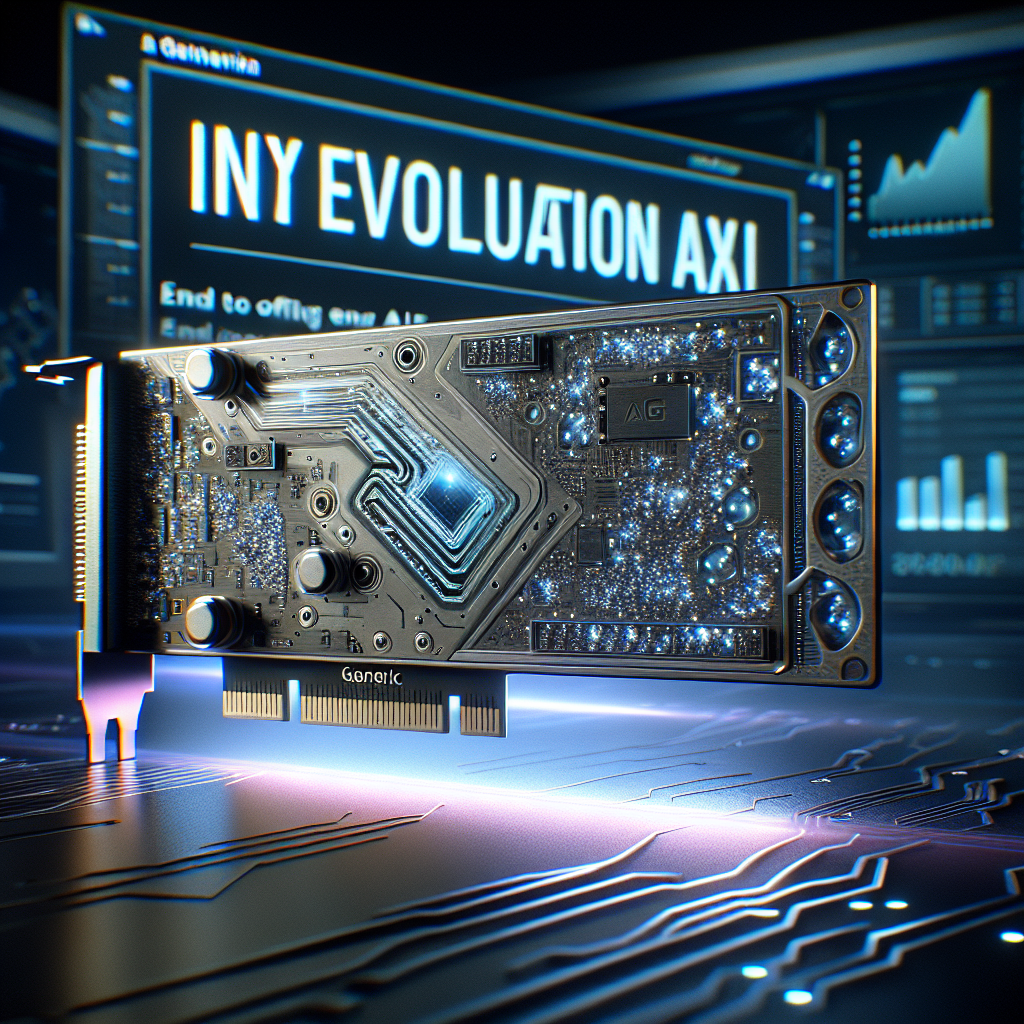-
New data shows AI agents invading the workplace, with mixed results

As artificial intelligence continues to permeate various sectors, a recent study highlights the growing presence of AI agents in the workplace, revealing both promises and challenges. Conducted by the HR software platform Workday, the survey involving nearly 3,000 business leaders worldwide uncovers a complex relationship with these technologies. While trust in AI agents is on the rise, it is notably selective for specific tasks, raising questions about their role in modern work environments.
The survey indicates that approximately 75% of business leaders are comfortable collaborating with AI agents. However, a significant divergence appears regarding authority; only 30% would feel at ease taking directives from these systems. The findings suggest that despite recognizing the potential for efficiency and productivity gains attributed to AI, hesitance lingers when it comes to ceding control over critical tasks.
Research from Stanford University corroborates these sentiments, showing that professionals are increasingly comfortable entrusting AI agents with menial responsibilities but draw a distinct line at more sensitive functions. This selective trust is indicative of the broader apprehension surrounding AI in workplaces, where the balance between leveraging technology and retaining human oversight is both crucial and contentious.
One key insight from the Workday survey is the correlation between familiarity and trust. Direct interactions with AI agents enhance employees’ confidence in their capabilities. This growing trust is essential since 90% of respondents acknowledged that AI could significantly enhance their productivity. However, they also expressed concerns that this dependence could lead to increased demands from management and a potential decline in critical thinking skills due to the diminishing need for personal judgment in decision-making.
This landscape creates a tension between business ambitions and employee apprehensions. Leaders are eager to adopt AI solutions to maximize efficiency and keep pace with competitors amid the ongoing AI revolution. Simultaneously, employees grapple with the implications of sharing key responsibilities with algorithms, prompting a reevaluation of workplace norms.
Casual use of AI agents appears to have a more pronounced acceptance, particularly for tasks like training and administrative functions. In contrast, high-stakes tasks such as hiring and legal responsibilities face considerable skepticism regarding AI involvement. This dichotomy calls for a nuanced understanding of where AI can genuinely add value without undermining essential human elements in critical operations.
As businesses navigate these changes, advisory companies like Workplace aim to guide organizations in adapting to the evolving AI landscape. Understanding the intricacies that AI introduces within workplace dynamics will be paramount for leaders seeking to foster a cooperative environment. The objective is to harness AI’s strengths while mitigating the risks that arise from dependence on technology.
This growing tension encapsulates the broader narrative of AI integration into everyday business. While AI agents can enhance productivity and streamline processes, they also challenge existing frameworks of trust, authority, and human interaction. Moving forward, it will be essential to strike a balance that accommodates technological benefits while preserving the fundamental human elements that drive creativity, collaboration, and critical thinking.
As the conversation surrounding AI continues to evolve, it remains imperative for leaders to foster transparent discussions around the implementation of AI agents. Addressing employee concerns openly and fostering an environment where humans and AI can coexist amicably will be vital in realizing the promised potential of AI technologies in the workplace.
-
Seoul-based datumo raises $15.5M to take on Scale AI, backed by Salesforce

The rapidly evolving artificial intelligence landscape has seen significant competition recently, with a new player making headlines: datumo. Based in Seoul, this innovative startup has successfully raised $15.5 million in a funding round led by Salesforce. This investment positions datumo as a formidable challenger to established AI companies like Scale AI and is a testament to the increasing interest in AI-enabled data solutions.
Founded to address the complicated challenges of data labeling and management, datumo aims to streamline the process for businesses harnessing machine learning and AI technologies. As organizations continue to rely more on data for operational efficiency and enhanced decision-making, the demand for high-quality, accurately labeled data has only intensified. Datumo responds to this need, leveraging state-of-the-art technology to provide comprehensive solutions that can handle complex data requirements.
The backing from Salesforce not only adds a layer of credibility but may also facilitate potential collaborations that could accelerate datumo’s growth. Salesforce, a leader in cloud-based customer relationship management, is no stranger to the value of AI. Their commitment to AI integration in business processes aligns well with datumo’s mission. By enhancing data management capabilities, datumo can empower Salesforce customers to unlock new insights and maximize the value of their data assets.
This funding round underscores a significant shift in how venture capital is being allocated within the tech industry, particularly in AI. Investors are increasingly recognizing the value of data-centric solutions, especially those that can efficiently support AI initiatives. This trend points to a broader acknowledgement that as AI continues to advance, the foundational elements like data quality and accessibility will be paramount.
Datumo’s approach also emphasizes efficiency within the AI development lifecycle. By reducing the time and resources required for data preparation, datumo positions itself as a critical partner for companies looking to deploy AI solutions faster and more effectively. The impact of such efficiencies can lead to shorter time-to-market for AI products, which is a significant advantage in today’s fast-paced market environment.
One of the core challenges that companies face while implementing AI solutions is the quality of the training data. Inaccurate or poorly labeled data can lead to subpar AI models that fail to deliver expected results. Datumo’s sophisticated technologies aim to mitigate these risks, enabling organizations to rely on the integrity of their data and, consequently, the performance of their AI models.
Moreover, as businesses increasingly recognize data as a vital asset, the market for data management solutions continues to grow. Datumo’s funding will likely enable them to scale their operations and enhance their product offerings, which is critical in a competitive space where staying ahead of technological advancements can make or break a company.
Looking ahead, datumo’s journey will not only involve competing with established players like Scale AI but also about navigating the rapidly changing expectations of customers in the AI landscape. Success in this domain will require not only technical prowess but also an acute understanding of market dynamics and customer needs.
In summary, datumo’s recent funding success highlights a shift in focus towards intelligent data solutions in the AI domain. With strong financial backing and a clear vision for value creation, this Seoul-based startup is well-positioned to disrupt the data management scene. As businesses continue to lean heavily on AI, datumo’s advancements may serve as pivotal enablers for organizations seeking to optimize their data strategies and harness the full potential of artificial intelligence.
-
Roblox is sharing its AI tool to fight toxic game chats – here’s why that matters for kids

In the digital age, online gaming has transcended mere entertainment; it has become a social phenomenon. However, the vibrant interfaces of popular platforms like Roblox are marred by the shadows of toxic interactions. From vulgar language to outright criminal behavior, the risk of online predators poses a significant challenge today, especially for younger players. Roblox is stepping up to the plate by introducing Sentinel, an AI-driven tool specifically designed to enhance safety in online gaming chats.
Roblox, with its 100 million daily users, many of whom are children, has recognized the urgent need for effective moderation. The company has long dealt with incidents of online toxicity, and its solution is not just another standard profanity filter that reacts to offensive language. Instead, Sentinel proactively identifies potentially harmful patterns in conversations. By monitoring the dynamic flow of chat interactions over time, this tool can detect early warning signs, such as an adult player who seems overly interested in a child’s personal details.
In a testament to its effectiveness, Sentinel has already aided Roblox moderators in filing around 1,200 reports to the National Center for Missing and Exploited Children within the first half of the year. This is a notable achievement compared to the less effective automated systems of the past. I can’t help but reflect on my own childhood experiences in digital chat rooms, where moderation rarely felt like more than a speculative guess based on spelling and grammatical patterns.
The most groundbreaking aspect of this initiative is Roblox’s decision to open-source Sentinel. This means that other gaming platforms, from behemoths like Minecraft to smaller indie titles, can incorporate this tool to enhance safety. This generous move not only positions Roblox as a leader in online safety but also has substantial public relations and long-term commercial advantages.
For parents, the implications are profound. As more games implement Sentinel-style safety checks, the risks that children face while gaming are significantly mitigated. Parents can now feel assured that technological measures are in place to protect their kids, providing them with a safety net they did not need to actively configure. For children, this development means fewer distractions from their gaming experience, allowing them to enjoy their time without worrying about navigating potentially dangerous online spaces.
Beyond just Roblox, the ramifications of this initiative are monumental for the gaming industry at large. If every major game, from competitive esports to casual indie games, adopted similar standards, this could set a new benchmark for online safety. While it may not completely eradicate toxic behavior, it would undoubtedly make it more difficult for such conduct to remain hidden within game environments.
AI for Online Safety
As promising as Sentinel is, it also raises important questions about privacy. The system works by analyzing chat interactions in real-time, searching for red flags that may indicate inappropriate behavior. Roblox assures users that it employs one-minute snapshots for monitoring and incorporates a human review process for flagged content. Still, the fundamental nature of this oversight is surveillance, and this poses ethical dilemmas that warrant careful consideration.
The decision to open-source the Sentinel tool means that any online platform can adopt it, leading to an increase in surveillance across numerous chat environments. This raises concerns about data privacy and the potential misuse of technology. As AI tools become more widespread, establishing a balance between safety and privacy rights will be crucial.
In conclusion, Roblox’s launch of the Sentinel AI tool showcases a proactive approach to ensuring the safety of children in online gaming. While challenges related to privacy and surveillance are evident, the potential benefits of enhanced safety measures cannot be understated. If adopted widely, such technologies can transform how online interactions are moderated and ensure that gaming remains a safe haven for creativity and community, especially for younger audiences.
-
Micron raises forecasts as AI boosts memory chip demand

In a notable turn of events, Micron Technology announced on Monday that it has raised its fourth-quarter revenue forecast, largely driven by surging demand for its memory chips that support artificial intelligence (AI) infrastructure. This optimistic projection has sent the company’s shares rising by approximately 3% in the wake of the announcement, signaling strong market confidence in Micron’s positioning within the tech sector.
The semiconductor industry, particularly memory chip manufacturers, has seen a significant uptick in orders for high-bandwidth memory (HBM) chips. These chips are critical for intensive data processing and are now increasingly sought after as major technology firms ramp up their investments in AI data centers. Micron’s latest forecast indicates an expected quarterly revenue of $11.2 billion, with a margin of plus or minus $100 million. This contrasts sharply with the previous estimate of $10.7 billion, also with a $300 million margin, showcasing the robust demand they are experiencing.
Moreover, the adjusted gross margin forecast has also been improved to 44.5% (plus or minus 0.5%) for the fourth quarter, compared to a prior expectation of only 42% (plus or minus 1%). This revision underscores Micron’s ability to adapt to market dynamics and leverage its product pricing amidst a changing competitive landscape. As noted by Sumit Sadana, Micron’s Chief Business Officer, there has been notable pricing strength across various end markets worldwide, which has enabled the company to raise prices in the face of high demand.
The demand surge for memory chips is further influenced by supply constraints in HBM production, which have allowed Micron to increase prices on some products, marking a significant departure from the historically thinner margins that memory chip manufacturers faced. According to eMarketer analyst Jacob Bourne, this change indicates a substantial shift in the market where supply-demand dynamics favor manufacturers like Micron, allowing them to enhance profitability.
Furthermore, Micron’s positive projections align with broader industry trends observed in AI memory chip markets. Notably, Nvidia supplier SK Hynix anticipates the market for specialized AI memory chips will grow by 30% annually until 2030, reflecting an expansive opportunity within the sector. This projection highlights the long-term growth prospects for companies like Micron as they cater to the increasing needs of AI-driven applications.
However, there are potential hurdles ahead. The imposition of a 100% tariff on certain chips imported into the U.S. could pose risks to growth, although companies manufacturing domestically or committing to U.S. production will be exempt from these tariffs. Micron, having previously committed to significant investments totaling $200 billion, with an additional $30 billion earmarked for U.S. growth, appears to be strategically positioned to mitigate some of these regulatory challenges while capitalizing on the booming demand for AI-related technology.
In addition to enhanced revenue forecasts, Micron expects an impressive adjusted earnings per share of $2.85 for the fourth quarter, an increase from the prior estimate of $2.50 per share. The improved earnings forecast signifies the company’s operational strength and the robust nature of its business model as it adjusts to shifting market dynamics.
In summary, Micron Technology’s upward revisions in forecasts serve to highlight not only the increasing demand for memory chips driven by AI but also the company’s successful navigation of pricing pressures and operational challenges. As AI continues to integrate deeper into technology infrastructures, companies like Micron are poised to play a pivotal role, marking a significant trend in the semiconductor industry.
-
Rumble considers near $1.2 billion offer for German AI cloud group Northern Data

In a sign of the increasing consolidation in the artificial intelligence and cloud computing sectors, Rumble, a video platform known for hosting prominent content including U.S. President Donald Trump’s Truth Social, is considering a significant acquisition bid for the German AI cloud group Northern Data. The potential transaction, which Rumble estimates could reach approximately $1.2 billion, highlights the company’s ambition to enhance its global AI cloud capabilities and integrate cutting-edge technologies into its operations.
Rumble’s interest in acquiring Northern Data stems from the latter’s robust Taiga cloud unit and its expansive data center operations, which collectively offer substantial resources including a stockpile of Nvidia graphics processing units (GPUs). With over 20,480 H100 GPUs and more than 2,000 H200 GPUs at its disposal, Northern Data represents a valuable asset for Rumble as it seeks to harness advanced AI capabilities for its video platform. By gaining control of these resources, Rumble aims to elevate its service offerings and operational efficiency.
The potential acquisition is also expected to foster stronger ties between Rumble and Tether, a major player in the cryptocurrency market, which currently holds a 54 percent stake in Northern Data and has expressed support for the proposed transaction. According to Rumble’s statements, upon completion of the acquisition, Tether is anticipated to become a key customer, committing to purchase GPUs over several years. This partnership is expected to bolster both parties’ market positions in the competitive landscape of AI and cryptocurrency.
The proposed deal considers offering 2.319 shares of Rumble for each share of Northern Data, reflecting a valuation of about $18.3 per share. However, this offer comes at a 32 percent discount compared to Northern Data’s most recent closing price. The total deal value could reach approximately $1.17 billion, contingent upon successful due diligence and discussions proceeding without obstacles. Should the acquisition be finalized, Northern Data’s shareholders would own about 33.3 percent of Rumble’s shares, diversifying the ownership structure of the video platform.
It is essential to note that while Rumble is actively pursuing this opportunity, there is no guarantee that the discussions will culminate in a formal offer. Northern Data’s board is currently evaluating Rumble’s potential proposal and remains open to further discussions, stirring speculation in the market about the future of both companies. This development is part of a broader trend where companies are strategically acquiring AI and data resources to drive innovation and competitiveness in various industries.
Rumble, which went public through a SPAC deal in December 2021, has attracted notable investors, including tech billionaire Peter Thiel. The potential acquisition of Northern Data could mark a significant step in Rumble’s strategic growth, especially as it aims to leverage AI technologies to enhance its platform and user experiences. Furthermore, the deal would involve Northern Data divesting from its crypto mining business, Peak Mining, which has been facing pressures and requires additional capital to service existing loans, particularly from Tether itself.
As the conversations progress, the implications of this acquisition could extend far beyond Rumble and Northern Data. Should the deal succeed, it could create a ripple effect in both the tech and finance sectors, potentially influencing future investments in AI and cloud technologies. Rumble’s move to secure a larger foothold in the AI domain, coupled with Tether’s involvement and backing, signals a growing recognition of the importance of computational power—especially in terms of GPUs—in driving advancements in AI applications.
This situation is developing, and stakeholders in both companies will be watching closely as the next steps unfold. The acquisition’s outcome could not only reshape Rumble’s capabilities but also contribute to its long-term strategy in a rapidly evolving technological landscape. Embracing AI and cloud computing will likely play a critical role in shaping the future of video content and user engagement across multiple platforms.
-
Deepflow, the AI System Designed to Predict Prices, Demand, and Inventory with Unusual Precision

Bringing a new product to market has always been a gamble. Even the most experienced manufacturers can misread market demand, overproduce, or miss a critical pricing window, resulting in a high failure rate for new products, wasted resources, and unsold inventory. Traditional forecasting methods, often based on a simple three-month rolling average, struggle to anticipate the fast-changing realities of global markets.
For manufacturers, the lifecycle of a product—launch, production, sales, and eventual discontinuance—hinges on accurate predictions. Misjudging demand can mean tying up millions in excess stock or, worse, losing customers to competitors when shelves go empty. In raw material procurement, poor forecasting can lead to buying at the wrong price or holding too much inventory, eroding profitability.
Impactive AI’s upcoming platform, Quantum Deepflow, aims to tackle these challenges head-on. Slated for its public demonstration at CES 2026, the system combines advanced AI demand forecasting with quantum machine learning. The goal is to predict not just sales patterns but the entire product lifecycle while also optimizing raw material procurement.
Deepflow can forecast raw material prices like copper, aluminum, or steel, up to six months ahead, with claimed accuracy rates of an impressive 97–98%. When it comes to predicting the commercial success of a product, accuracy ranges between 70–80%. Furthermore, the platform supports inventory management, with one industrial client reporting a remarkable 35% reduction in inventory, freeing up roughly 31 billion KRW ($22M) in cash.
The system utilizes a custom-built AI model trained on more than 60,000 variables. It combines pattern recognition with proprietary algorithms, setting it apart from traditional models. While many companies still rely on historical averages, Quantum Deepflow incorporates a broader set of signals, including market trends, seasonal patterns, and macroeconomic factors.
Impactive AI claims to leverage quantum computing through cloud-based quantum resources. This approach allows for faster training times and more nuanced predictions in complex, multi-variable scenarios—a field still under intense research with few companies utilizing this technology in their day-to-day operations.
Notably, for raw material forecasts, the platform does not require customer data, making the initial onboarding easier for manufacturers. However, inventory optimization involves creating a custom model using client-specific historical data, which tailors the system to meet individual business needs effectively.
The business goal of Quantum Deepflow is clear: to provide companies with superior forecasting capabilities that can lead to enhanced profitability. If the data presented is realistic, then the improvement in accuracy is the main selling point of the platform. During a live demonstration for a German company, Quantum Deepflow reportedly predicted daily copper and aluminum prices during a five-day exhibition with around 97% accuracy. Another case involving a steel manufacturer saw the company improve inventory forecast accuracy to 75%, far surpassing its in-house methods—a clear added-value proposition for any business.
As companies today use a mix of statistical models, enterprise resource planning (ERP) tools, and machine learning systems to manage their supply chains and resource allocation, Quantum Deepflow represents a significant breakthrough. By redefining how predictions are made, it acknowledges the intricate dependencies in supply chains and the nuances of market behavior. This system promises to empower manufacturers and suppliers alike, aiding them in better positioning their products to meet the demands of an increasingly competitive landscape.
In conclusion, Impactive AI’s Quantum Deepflow holds the potential to reshape how industries approach forecasting and inventory management. With its advanced AI and quantum computing foundation, businesses can potentially minimize waste, optimize costs, and improve effective decision-making. As the platform approaches its public unveiling, industry leaders and investors alike will be watching closely to see if Deepflow delivers on its ambitious promises.
-
AI agents are being drafted into the cyber defense forces of corporations

The emergence of generative AI and large language models has transformed the cybersecurity arena, equipping cybercriminals with tools that can generate sophisticated video and voice deepfakes, as well as personalized phishing schemes. This paradigm shift highlights the increased vulnerability of organizations, pushing them to explore AI-driven defenses to counteract these advanced threats.
With the escalation of cyber threats, corporate cybersecurity measures are evolving rapidly. CEO of cybersecurity technology firm ReliaQuest, Brian Murphy, emphasizes that AI is reshaping the landscape of corporate defense mechanisms. As AI technologies gain traction in various sectors, including finance and legal, their application in cybersecurity becomes ever more crucial. Cybersecurity AI agents are now key players, responsible for detection, analysis, and alert systems in organizations striving to maintain security amidst growing complexities.
Murphy elaborates on the challenges faced by security teams operating within larger corporations, stating, “It’s a massive challenge to detect, contain, investigate and respond…” He highlights how AI helps to filter out less important tasks—what he refers to as “tier one or tier two work”—allowing security personnel to focus on more pressing concerns that could pose a threat to the organization.
AI’s role in enhancing productivity within cybersecurity teams reflects a broader trend across various industries. In a communication to Amazon employees, CEO Andy Jassy expressed his belief in the transformative potential of AI agents, predicting that they will proliferate across diverse sectors. Jassy envisions a paradigm where workers spend less time on repetitive tasks and engage in more innovative, strategic thinking. He believes that these agents will not only enhance productivity but also make work more fulfilling and dynamic.
Murphy acknowledges the prevalence of burnout among cybersecurity professionals, exacerbated by the increasing volume of tasks they face. The evolution of AI may help alleviate some of this strain by automating tedious responsibilities, allowing professionals to enhance their focus on critical analysis and response efforts.
Meanwhile, the same advancements that aid defenders are also exploited by attackers. Cybercriminals leverage AI to enhance the quality of phishing emails, which have evolved from poorly crafted messages riddled with errors into sophisticated, authentic-looking communications capable of deceiving even experienced personnel. Murphy points out that AI empowers the average adversary, thereby necessitating that defensive teams employ AI to counteract these elevated threats.
ReliaQuest’s response to the changing landscape has been the development of GreyMatter Agentic Teammates, which serve as autonomous AI agents tailored for specific roles within security operations teams. These agents are essentially an extension of the human workforce, capable of executing a range of tasks traditionally performed by detection engineers or threat intelligence researchers. Murphy describes the dynamic as one where the human operator prompts the AI, likening it to a partnership where the AI “teammate” amplifies the capabilities of an incident response analyst.
An illustrative scenario provided by Murphy involves international executive travel. In instances where an executive’s laptop or smartphone connects to a network in a country like China, security teams receive alerts that require confirmation that the device is being used securely. Here, the incorporation of AI not only speeds up the verification process but also enhances the overall effectiveness of the security response.
In conclusion, as AI continues to permeate the cybersecurity landscape, it offers promising avenues for enhancing defensive strategies and reducing the burdens on human security professionals. As organizations face increasingly sophisticated threats, the adoption of agentic AI appears to be a crucial step toward maintaining robust cybersecurity defenses while also cultivating a more productive and focused work environment.
-
‘Dearly beloved, this eulogy was written by AI’: grieving families turn to new technology for final farewells

In an era where technology is increasingly intertwined with our daily lives, it seems fitting that it extends into the most poignant moments of our existence: the farewells we say to our loved ones. The advent of artificial intelligence (AI) has opened new avenues for grieving families, leading to a rise in the use of AI-generated eulogies. This innovative approach to honoring departed loved ones is starting to gain traction, showcasing how technology can bridge the gap between sorrow and celebration.
Many funeral directors, particularly in Ireland, have observed a growing trend of families turning to AI to assist in crafting personalized eulogies. These digital tributes allow those in mourning to articulate their feelings more eloquently, amidst the emotional turmoil that often accompanies the loss of a loved one. The use of AI for such a sensitive task may seem unconventional, but it reflects a broader shift in how technology can be utilized to enhance personal expression and memorial services.
The process often begins with families sharing memories, anecdotes, and attributes of the deceased with AI systems designed to generate text. The technology processes this input, producing a eulogy that resonates with the individual’s unique personality and the cherished moments they shared with family and friends. This creative outlet not only helps in easing the burden of crafting a speech during an emotional time but also enables families to preserve their loved one’s legacy in a meaningful way.
As this trend continues to evolve, funeral directors are being encouraged to educate themselves on the advantages and potential pitfalls of integrating AI into their services. A careful approach is necessary as families navigate through their feelings and the sentimental nature of preparing a eulogy. Guidance on the ethical considerations and emotional impacts surrounding AI-generated tributes will be critical as more families choose this modern approach.
This increase in AI utilization in the farewelling process poses questions about authenticity and emotional connection. While AI can generate impressive text, it lacks the inherent human touch that resonates deeply during such moments. Therefore, it becomes vital for users to remain mindful of how AI can complement rather than replace deeply personal expressions of sorrow and tribute.
Moreover, the use of AI in funeral services marks a progressive step in how society collectively approaches death and remembrance. As families become more comfortable with digital technologies, the need for human-like interfaces that provide assistance and support becomes ever more apparent. This progression not only enhances the funeral experience but also addresses the needs of a diverse population that may seek convenience without sacrificing authenticity.
Looking ahead, it will be interesting to observe how the industry adapts to this new demand. As more funeral homes begin to offer AI-generated eulogy services, a need for standards and best practices will emerge. Training for professionals in the funeral industry will likely shift towards understanding both the technology and its integration into the emotional landscape of memorial services.
This potential shift illustrates the broader implications of AI in sensitive fields, including healthcare, mental health, and end-of-life services. The challenge will be balancing technological advancement with the uncompromising need for human connection and empathy in sectors where emotions run high.
In conclusion, the use of AI to help compose eulogies brings forth a new dimension to how we express grief and celebrate lives. While it offers families an innovative tool for personal expression during their time of loss, it also calls upon society to contemplate the implications of integrating technology into deeply human experiences. As funeral directors and families explore these new possibilities, the goal remains clear: to honor the memory of loved ones in a way that is both personal and meaningful, ensuring their legacies endure through heartfelt tributes.
-
The next stage in AI power? XConn set to reveal end-to-end PCIe Gen 6 offering higher bandwidth than ever

In a rapidly evolving technological landscape, XConn Technologies is gearing up to make waves with its latest innovation: a fully integrated, end-to-end PCIe Gen 6.2 and CXL 3.1 solution. Set to be unveiled at the anticipated Future of Memory and Storage (FMS25) event, this breakthrough promises to push the envelope on bandwidth limits, which is crucial for handling the ever-growing demands of AI and data center workloads.
The centerpiece of this announcement is XConn’s Apollo 2 switch, which is being marketed as the first hybrid chip supporting both PCIe Gen 6.2 and CXL 3.1 within a single design. This innovation aims to simplify interconnect designs significantly, enhancing scalability and offering theoretical flexibility that could redefine data center architectures. As explained by Gerry Fan, CEO of XConn Technologies, the company is focused on enabling its customers with best-in-class solutions that meet the performance needs of the future.
One of the most significant implications of this technology is its potential to reduce complexity in data centers while simultaneously promoting broader architectural flexibility. However, as exciting as these advancements are, they come with caveats. The real-world effectiveness and reliability of these solutions remain speculative until thoroughly tested under actual production workloads. Upcoming demonstrations at FMS25 will showcase low-latency, high-bandwidth switching capabilities, positioning the technology as ready for applications such as AI/ML model training and cloud computing.
The collaboration with Intel further amplifies the importance of the Apollo 2 switch. Intel Senior Fellow Ronak Singhal articulated the potential benefits of this partnership, stating that it aims to ensure seamless interaction between hardware and software components, thereby delivering robust end-to-end solutions. This collaboration is crucial as the integration of different technologies like PCIe and CXL is often fraught with challenges; however, this endeavor seeks to foster an interoperable environment, paving the way for more efficient systems.
Despite all the promise, historical context reminds us that the journey from demonstration to reliable, scalable solutions can be lengthy. Past experiences in the tech industry have shown that validation cycles often require multiple iterations before real-world effectiveness can be guaranteed. Thus, while the prospects of higher bandwidth and seamless integration are enticing, the industry will need to remain cautiously optimistic until definitive benchmarks are released, allowing for a comparison against existing PCIe Gen 5 deployments.
Furthermore, XConn’s partnership with ScaleFlux aims to enhance CXL 3.1 interoperability, specifically for AI and cloud infrastructure. This collaboration is indicative of the momentum behind XConn’s technology, although it still does not confirm how well these new systems will perform under the specific loads typical of AI applications.
In summary, the forthcoming reveal at FMS25 by XConn Technologies highlights a significant step forward in the quest for improved AI power and data center efficiency. With its novel Apollo 2 switch, the company is not just showcasing technological prowess but also setting a stage for future integrations that could reshape how businesses manage and optimize their workloads. As leaders and innovators in the tech industry, both end-users and manufacturers will be watching closely to see how these developments unfold and translate into practical applications.
-
Chips With Neural Tissue Aim to Make AI More Energy Efficient

The landscape of artificial intelligence is rapidly evolving, yet this advancement comes with a significant environmental cost. As generative AI systems become more sophisticated, the demand for energy is skyrocketing; forecasts suggest that AI’s energy consumption could double within five years, potentially consuming 3 percent of global electricity. However, a groundbreaking approach emerged from recent discussions at the United Nations’ AI for Good Summit, proposing that integrating neural tissue into computer chips could emulate the human brain’s efficiency, dramatically reducing energy demands.
At the summit, David Gracias, a professor at Johns Hopkins University, presented his intriguing research on organoid intelligence—a revolutionary concept that merges living brain cells with computing hardware. Gracias and his team have made strides in developing biochips that incorporate neural organoids, which are lab-grown three-dimensional clusters of brain cells. This new avenue of research explores how these living systems can interact with AI technology to enhance processing capabilities while significantly curbing energy consumption.
Organoid intelligence, as a field, endeavors to discover computing methods that mimic biological neural networks. Unlike traditional silicon-based processors, which operate within rigid two-dimensional frameworks, biochips embody a 3D structure, mimicking the human brain’s remarkable complexity. The human brain showcases a staggering capacity of up to 200,000 connections per neuron, creating a network capable of sophisticated processing. This contrasts sharply with conventional chips, which struggle to replicate such connectivity and efficiency.
To facilitate this innovative technology, Gracias’s team has designed a unique 3D electroencephalogram (EEG) shell. This groundbreaking device wraps around the organoid, forming a tailored interface that allows for enhanced stimulation and recording of electrical activity within the brain cells. By addressing the limitations of flat electrodes, the team aims to enable biochips to communicate seamlessly with living neurons, transforming the way information is processed and stored.
A pivotal aspect of this project is how the organoids are trained. Utilizing advanced reinforcement learning methods, researchers send targeted electrical pulses to specific regions of the organoids. This trial-and-error learning approach allows the biochips to refine their responses over time, effectively ‘training’ them to perform complex tasks autonomously.
The potential implications of successfully integrating biochips into AI systems are profound. Experts predict that these living systems could significantly outstrip the performance of existing silicon-based geometries, resolving several of the energy efficiency challenges currently associated with artificial intelligence. Should biochips reach commercial viability, they could reshape sectors reliant on AI, from healthcare diagnostics to autonomous vehicles, where energy efficiency is paramount.
Gracias is optimistic about the direction of his team’s research, stating, “This is an exploration of an alternate way to form computers.” His vision encapsulates the essence of innovation in this domain: developing intelligent systems that do not merely rely on traditional computing paradigms but instead draw inspiration from the intricate workings of life itself.
While still in its infancy, the field of organoid intelligence is poised to carve a new path for AI technologies. As the stakes of energy consumption rise, the transition to biochips may well represent an essential evolution in designing smarter, more sustainable AI solutions. The race to harness biological intelligence within computational frameworks could redefine the trajectory of technology, paving the way for AI systems that are not only more capable but also more harmonious with the planet’s ecological balance.
